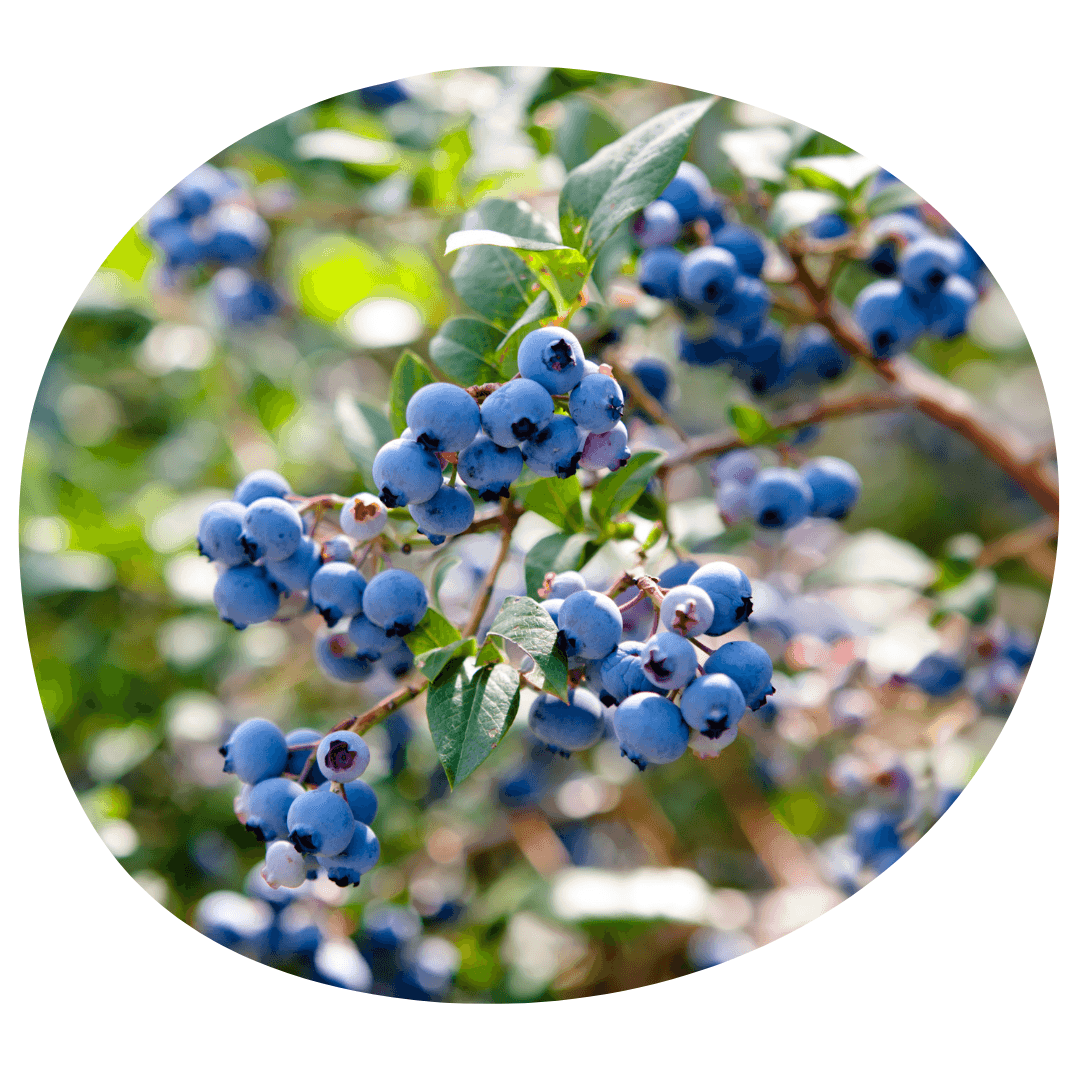How to Grow Blueberries

Blueberries are a classic summer treat, delicious straight from the garden or cooked in jams, pies, and other recipes. While blueberry plants do require the correct conditions and some particular care to provide you with fruit, it doesn’t take much to produce large, juicy berries and a beautiful shrub for your landscape.
Blueberry plants thrive in full sun and produce the most fruit when given at least 6 hours of sunlight per day. The plants will tolerate partial shade, but fruit production will be lessened. Their soil should be acidic (between 4.2 and 5.0 pH) and well-draining soil with plenty of organic matter. If you’re unsure about the pH level of your soil or would like to check it at the start of the growing season, you can use a simple pH test kit. To acidify your soil, add peat, aluminum sulphate, or another low pH soil amendment.
How to Choose a Blueberry Plant

There are many types of blueberry to choose from, divided into highbush, lowbush, and half-high varieties.
Highbush blueberries are divided into two groups, Northern Highbush (Vaccinium corymbosum) which is native to eastern and central Canada as well as the eastern and southern US, and Southern Highbush (Vaccinium formosum) which is native to the southeastern US. In Canada, the Northern Highbush is the most popular. Highbush blueberries typically grow between 6 and 12 feet (1.8-3.6m) tall and wide and, depending on variety, may be hardy to zone 4.
Lowbush blueberries (Vaccinium angustifolium) are native to eastern and central Canada and the northeastern US. Plants grow up to 2 feet (.6m) tall and wide, making them much more compact than their highbush cousins. They are very cold hardy and depending on variety may grow in climates as cold as zone 3.

Half-high blueberries (Vaccinium corymbosum x V. angustifolium) are a cross between Highbush and Lowbush species, producing a plant that is more cold tolerant and compact than the Highbush with larger berries than the Lowbush. Plants typically grow up to 4 feet (1.4m) tall and wide and may be hardy down to zone 3.
We recommend growing at least two blueberry plants of different varieties, as pollination will increase yields even in self-fertile plants. Choosing varieties with different maturity times will lengthen your harvest period and ensure fresh, tasty blueberries all season long.
When planting your blueberries, ensure they are spaced at least 3-5’ (1-1.5m) apart to account for their future growth. Blueberry plants have shallow root systems, so handle them carefully when transplanting and keep them uniformly watered throughout the growing season, especially during dry periods. Add mulch to help retain moisture and protect the roots from crowding by weeds and drying out.
How to Fertilize Blueberries

We recommend fertilizing with a blueberry-specific fertilizer or an aluminum sulphate based fertilizer to help keep the pH low. If the pH of your soil is already in the correct range, you can use a balanced fertilizer to add nutrients. You can fertilize your plants up to three times in the growing season: in the spring as the buds are developing, again six weeks later, and one final time in the early fall. Mature plants may only require one application of fertilizer per year. Be careful when fertilizing that you do not disturb the shallow root system of the plant; sprinkle your fertilizer around the edge of the bush’s canopy and allow it to sit and be absorbed into the soil naturally without tilling.
How to Prune Blueberries
For the first 2 to 3 years of growth, your plants will need little to no pruning. You should only remove damaged, diseased or dead growth to encourage an upright and vigorous growth habit. After blueberry plants are established, annual pruning will help invigorate and improve the health and yield of the plants. Pruning should be done while the plants are dormant, usually between February to April in the Atlantic Canadian region.
After 5 years, Highbush blueberry stems tend to cease production and may be pruned back to promote healthier growth and a higher fruit yield. Any single cane that is older than 5 years or larger than 2" (5cm) in diameter should be cut back to the ground. Prune back 1/3rd of the bush to stimulate the growth of new stems in the spring. When you are done you should have no crossed branches or damaged stems, and no stumps left above the ground. Always use clean, sharp pruners when trimming your blueberry plants.
Blueberries develop on one-year-old wood, and buds that will become berries are produced in the preceding summer season. If deer are a problem for gardens in your area, we recommend protecting your blueberry bushes through the winter to avoid losing fruit-producing buds.

How to Harvest Blueberries
Different varieties of blueberries reach maturity at different times, but the harvest period is typically between June and August. When fully ripe, berries will be easy to remove from the bush with no resistance. The longer blueberries are left on the bush, the sweeter they will become, so don’t rush to pick them as soon as they turn blue. Blueberries will not continue to sweeten after being picked. If you’re concerned about birds getting to the berries first, we recommend covering your bushes with bird netting. Be gentle when handling blueberries to avoid bruising or squishing them. Blueberries will last for more than a week if refrigerated and can be kept all winter in the freezer.
| Return to Tips & Inspiration |